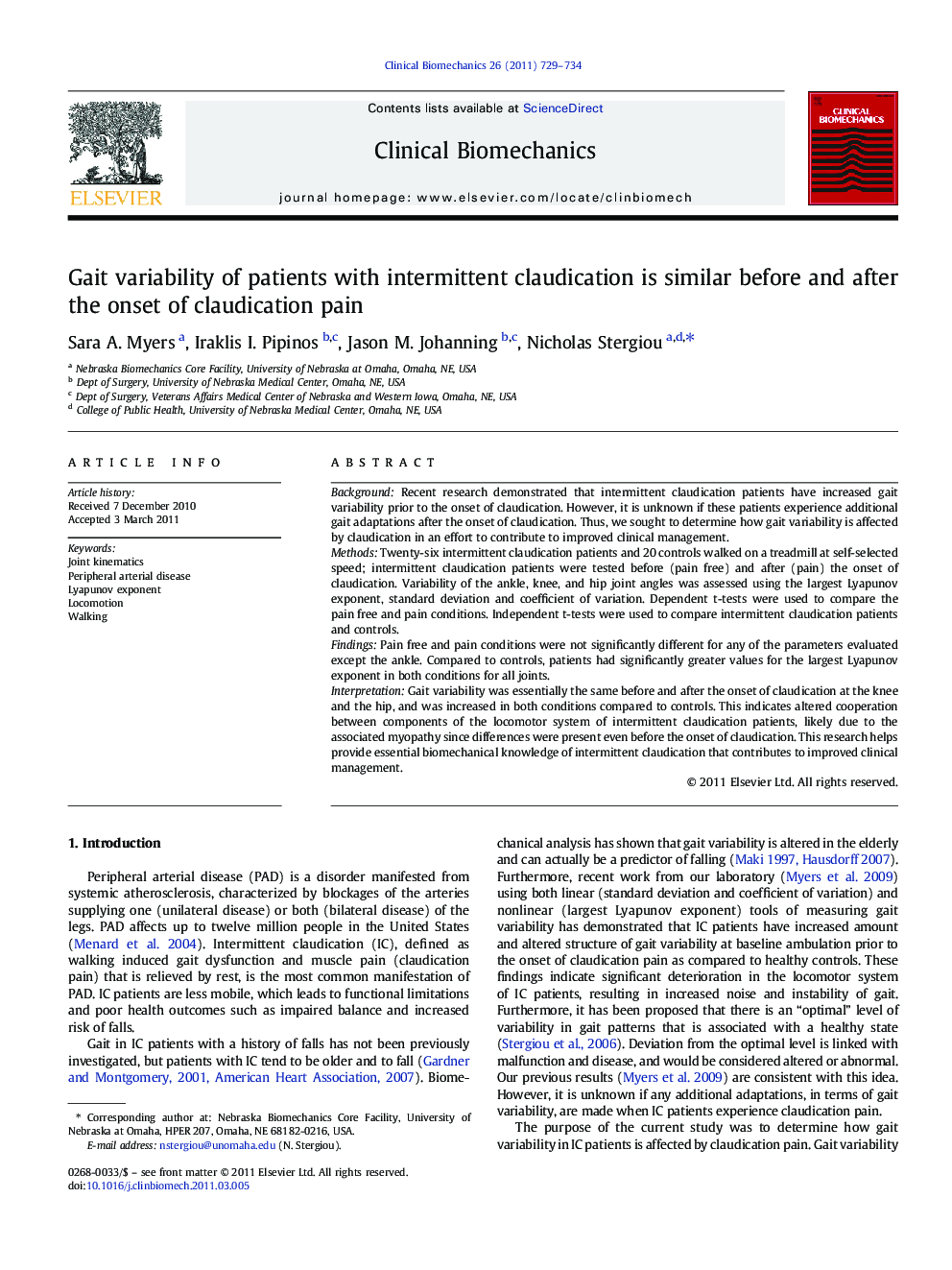| Article ID | Journal | Published Year | Pages | File Type |
|---|---|---|---|---|
| 4050720 | Clinical Biomechanics | 2011 | 6 Pages |
BackgroundRecent research demonstrated that intermittent claudication patients have increased gait variability prior to the onset of claudication. However, it is unknown if these patients experience additional gait adaptations after the onset of claudication. Thus, we sought to determine how gait variability is affected by claudication in an effort to contribute to improved clinical management.MethodsTwenty-six intermittent claudication patients and 20 controls walked on a treadmill at self-selected speed; intermittent claudication patients were tested before (pain free) and after (pain) the onset of claudication. Variability of the ankle, knee, and hip joint angles was assessed using the largest Lyapunov exponent, standard deviation and coefficient of variation. Dependent t-tests were used to compare the pain free and pain conditions. Independent t-tests were used to compare intermittent claudication patients and controls.FindingsPain free and pain conditions were not significantly different for any of the parameters evaluated except the ankle. Compared to controls, patients had significantly greater values for the largest Lyapunov exponent in both conditions for all joints.InterpretationGait variability was essentially the same before and after the onset of claudication at the knee and the hip, and was increased in both conditions compared to controls. This indicates altered cooperation between components of the locomotor system of intermittent claudication patients, likely due to the associated myopathy since differences were present even before the onset of claudication. This research helps provide essential biomechanical knowledge of intermittent claudication that contributes to improved clinical management.
